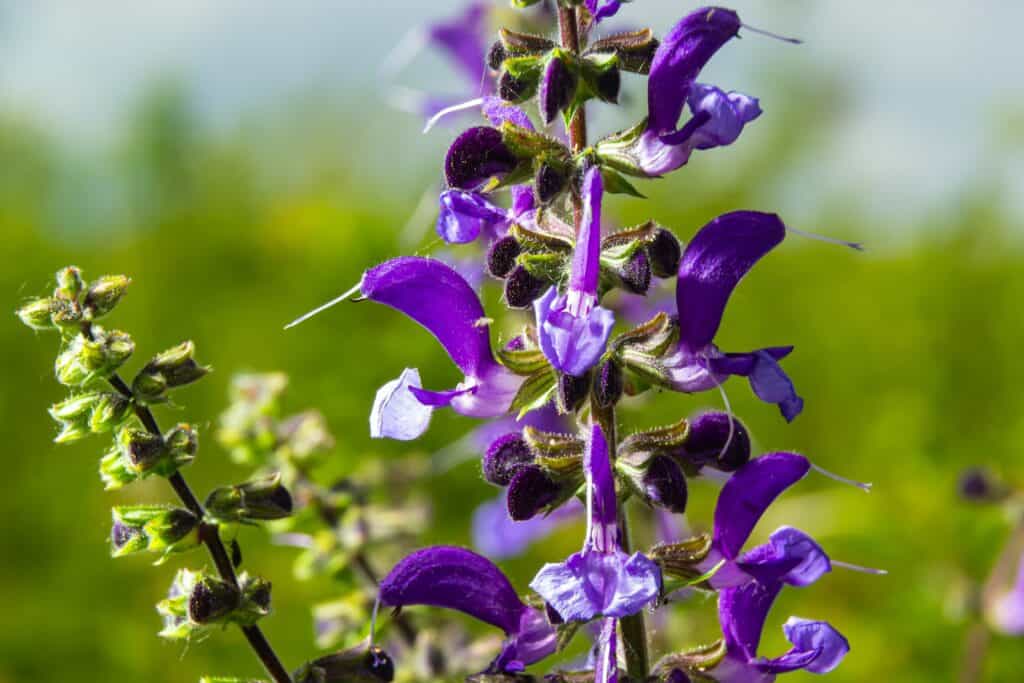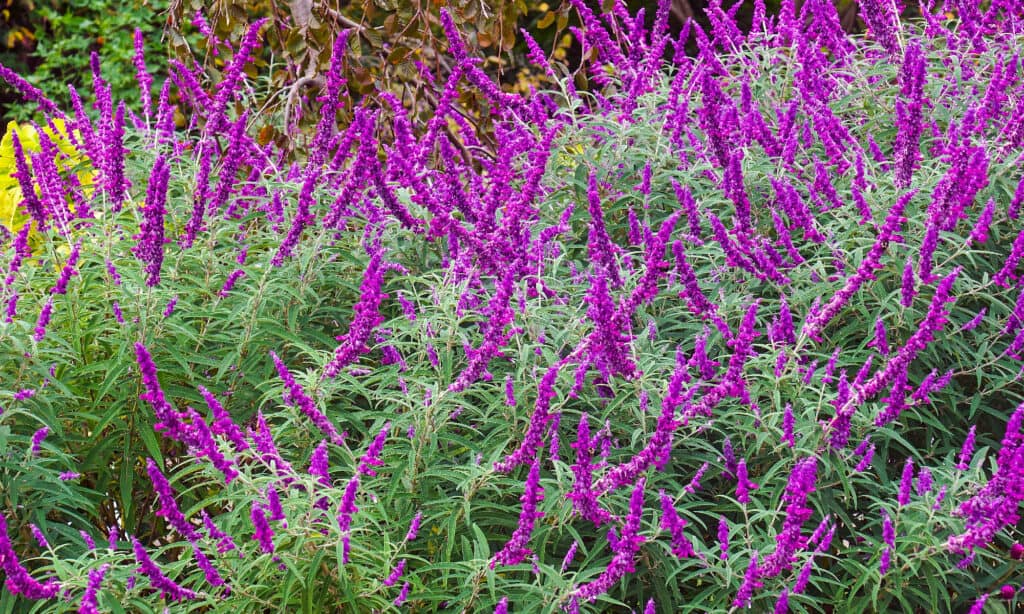16 Plants That Look Like Lavender And How to Care For Each
9. Meadow Sage (Salvia pratensis)

©olko1975/Shutterstock.com
This captivating wildflower exudes natural charm and shares visual similarities with lavender. Meadow sage produces lance-shaped leaves that are a rich green, and while they differ slightly from lavender’s foliage, they provide an appealing backdrop for its striking blooms.
Meadow sage also produces tall, slender spikes adorned with tubular flowers in shades of lavender, purple, or blue, closely resembling the elegant inflorescences of lavender. These blossoms not only evoke the charm of lavender but also attract a variety of pollinators, making specimens a delightful addition to wildflower meadows, cottage gardens, and naturalistic landscapes.
Meadow sage thrives in full sun to light shade but does its best flowering with ample light. Well-draining soil is also essential for this wildflower, though meadow sage can adapt to various soil types.
Keep the soil consistently moist, especially during dry spells. Adequate moisture supports healthy growth and blooming. Additionally, prune meadow sage after the first flush of blooms to encourage a second round of flowering and maintain a neat appearance.
Divide mature plants every few years to rejuvenate them and prevent overcrowding. Meadow sage is pest and disease-resistant, making it a low-maintenance wildflower for your garden.
10. Mexican Bush Sage (Salvia leucantha)

©Beach Creatives/Shutterstock.com
Mexican bush sage is a stunning plant that shares notable visual similarities with lavender while offering its distinct charm. This perennial sage features lance-shaped, gray-green leaves that closely resemble the foliage of lavender. However, what truly captures attention are its striking flower spikes.
Mexican bush sage produces tall, slender spikes adorned with velvety, tubular flowers in shades of lavender, purple, or white. These blooms bear a resemblance to the elegant inflorescences of lavender but come with their unique twist—soft, velvety bracts that give them a tactile allure. This combination of lavender-like leaves and velvety blossoms makes it a captivating choice for your garden.
Plant Mexican bush sage in a location that receives full sun to promote flowering. It also loves well-draining, slightly acidic soil. Keep the soil consistently moist during its growing season, but avoid overwatering to prevent root rot.
Prune specimens in the late winter or early spring to encourage new growth and remove any dead or leggy branches. In colder climates, provide winter protection by mulching around the base to shield it from frost.









